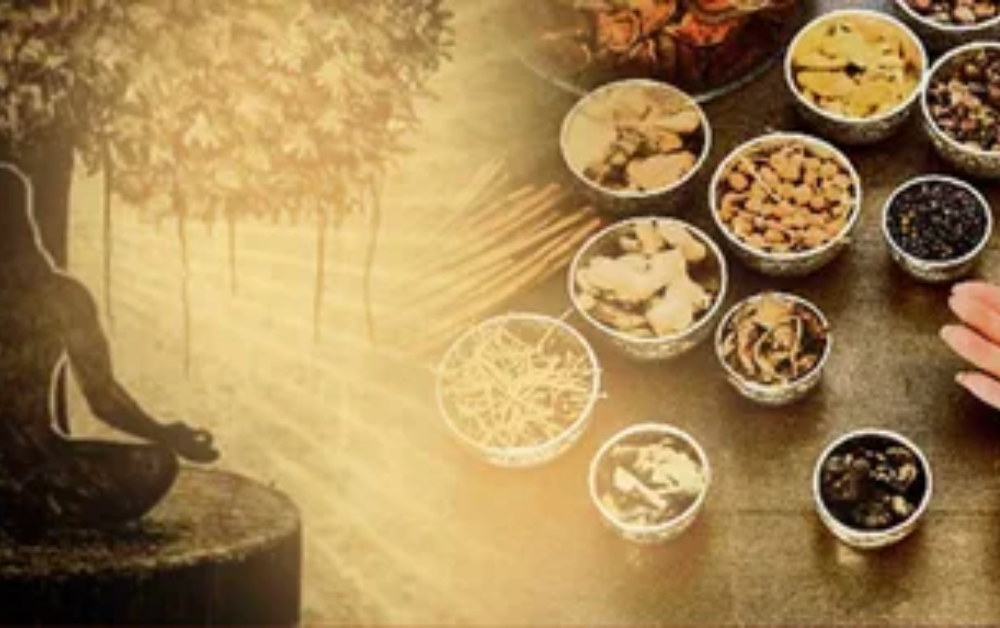In a world that’s increasingly fast-paced and materialistic, ancient traditions that emphasize sharing, compassion, and harmony have become more important than ever. One such meaningful and spiritually rooted tradition is annalepanam a practice that embodies the core of giving and gratitude.
More than just a religious or ritualistic offering, annalepanam is a timeless cultural expression of love, humility, and respect for life. Whether practiced in temples, homes, or communities, this sacred act brings people together in the spirit of nourishment, equality, and selfless service.
As Aayursaukhyaa revives India’s traditional values through Ayurveda and holistic healing, it becomes essential to explore how annalepanam in Delhi is creating a ripple of wellness, culture, and social harmony in modern urban life.
What is Annalepanam?
Annalepanam is a Sanskrit term that refers to the act of offering food, especially as part of a sacred or spiritual tradition. It goes beyond just feeding someone; it involves offering freshly prepared, wholesome food with purity of heart and the intention to serve, not to receive.
Rooted in Vedic traditions, annalepanam is not limited to a specific caste, religion, or age. It is seen as a dharmic duty and a symbol of abundance and humility. When practiced with sincerity, it transforms both the giver and the receiver.

Annalepanam in Ancient India
The tradition of annalepanam can be traced back to the times of the Vedas and Upanishads. Kings, sages, and householders were all encouraged to practice annalepanam as a part of their daily dharma. Feeding the hungry, especially guests, sadhus, and animals, was considered a path toward spiritual merit or punya.
In temples, annalepanam was an integral part of daily rituals, where food was first offered to deities and then shared as prasadam with devotees. This practice made food sacred and sharing divine.
Annalepanam in Delhi: Reviving a Sacred Tradition
In modern urban centers like Delhi, life often distances people from traditional values. However, with the efforts of spiritual organizations, wellness centers, and cultural groups like Aayursaukhyaa, the practice of annalepanam in Delhi is making a powerful comeback.
Here’s how annalepanam in Delhi is transforming hearts and communities:
1. Temple Initiatives and Prasadam Seva
Many temples across Delhi now organize daily or weekly annalepanam programs, where free meals are served to hundreds. These initiatives not only feed the hungry but also create a spiritual ambiance that unites people from all walks of life.
2. Community Kitchens and Wellness Centers
Aayursaukhyaa and similar wellness movements have adopted annalepanam as part of their outreach. Offering Ayurvedic meals, sattvic food, or detoxifying recipes to visitors and underprivileged people reflects the inner healing power of food.
3. School and College Campaigns
Educational institutions are organizing annalepanam in Delhi as part of awareness programs. Students contribute meals, distribute food to the homeless, and learn about compassion, sharing, and ancient Indian values.
The Spiritual Significance of Annalepanam
In the Ayurvedic and yogic worldview, food is considered sacred. Annalepanam doesn’t just nourish the body, it feeds the atma, the soul. Offering food with gratitude purifies the ego and creates a deep karmic bond between the giver and the divine.
Practicing annalepanam is said to balance the five elements (pancha mahabhutas), elevate sattva guna (purity), and reduce ahamkara (ego). It promotes humility, contentment, and gratitude essential traits for spiritual growth.
Ayurveda and Annalepanam: A Natural Connection
In Ayurveda, food is medicine. When food is prepared and offered with mindfulness, it becomes a source of healing. That’s why Aayursaukhyaa emphasizes the role of annalepanam as part of holistic healing therapies.
Offering warm, plant-based, dosha-balancing meals aligns with Ayurvedic principles. It not only feeds the body but also pacifies mental imbalances and opens the heart chakra (anahata).
Social Impact of Annalepanam in Delhi
The modern adaptation of annalepanam in Delhi has gone beyond religious circles. It now plays a vital role in addressing urban hunger, isolation, and social gaps. Some of the major impacts include:
- Feeding the Underprivileged: Daily annalepanam initiatives ensure no one sleeps hungry.
- Promoting Social Equality: Meals are shared without any caste, class, or economic discrimination.
- Fostering Volunteerism: Many citizens volunteer their time and energy to cook, serve, or donate.
- Cultural Revival: It reintroduces youth to the cultural and moral values of ancient India.
How Aayursaukhyaa Celebrates Annalepanam
At Aayursaukhyaa, annalepanam is more than a food service. It’s a celebration of wholeness and connection. Here’s how the initiative is shaping lives:
1. Monthly Annalepanam Drives
Each month, Aayursaukhyaa organizes an annalepanam in Delhi, especially in areas where access to warm, nutritious food is limited. These drives are eco-friendly, using biodegradable utensils and seasonal, Ayurvedic recipes.
2. Satvik Meal Offerings
Meals offered during annalepanam are free from onion, garlic, or processed foods. Instead, they are designed to balance the body and uplift the spirit—using recipes from Ayurveda and yogic diet plans.
3. Community Engagement and Awareness
Volunteers, wellness seekers, and guests participate in annalepanam programs and are educated on the importance of food hygiene, sustainability, and emotional well-being through mindful eating.
The Role of Annalepanam in Festivals and Rituals
Festivals like Akshaya Tritiya, Guru Purnima, and Navratri are often celebrated with annalepanam. Feeding the needy during such spiritual occasions adds to the merit and collective positivity.
Even family rituals like birth anniversaries, remembrance days, or auspicious events now often include annalepanam in Delhi as part of their ceremonies giving back to society in sacred ways.
Modern Formats of Annalepanam
While the essence remains traditional, the form of annalepanam has evolved to suit today’s urban settings. Some modern formats include:
- Food Donation Apps: Enabling users to sponsor or schedule annalepanam events
- Crowd-Funded Meals: Collective funding for community meals
- Zero-Waste Kitchens: Cooking with locally sourced and seasonal ingredients
- Mobile Annalepanam Vans: Reaching remote or underserved urban pockets
Each format redefines annalepanam while keeping its essence alive—serving with love.
Why Everyone Should Practice Annalepanam
Whether you’re a student, professional, homemaker, or entrepreneur practicing annalepanam even once a month can change your life and the lives of others. It instills a sense of humility, detachment, and joy that no material achievement can match.
You don’t need a temple or a big kitchen. Even offering a banana, some rice, or a homemade meal to someone in need counts as annalepanam.
Conclusion: Annalepanam is Humanity in Action
In a society searching for deeper meaning, compassion, and connection, annalepanam emerges as a powerful solution rooted in ancient Indian wisdom. It is the simplest yet most profound act of service, embodying empathy, mindfulness, and spiritual unity.
As annalepanam in Delhi continues to grow through organizations like Aayursaukhyaa, it reminds us that real healing begins not in medicines or therapy but in selfless giving, shared meals, and open hearts.
FAQs About Annalepanam
1. What is the meaning of annalepanam?
Annalepanam means the sacred offering of food, typically practiced with devotion and humility in spiritual, community, or wellness settings.
2. Is annalepanam a religious practice?
Though rooted in Vedic culture, annalepanam is not tied to any one religion. It is a universal act of kindness and generosity.
3. How is annalepanam practiced in Delhi today?
Annalepanam in Delhi is practiced in temples, schools, wellness centers, and community kitchens, often supported by volunteers and spiritual organizations.
4. Can anyone participate in annalepanam?
Yes, anyone regardless of age, gender, religion, or background can practice or support annalepanam.
5. What types of food are served in annalepanam?
The food is usually sattvic fresh, vegetarian, and balanced to support health and spiritual energy.
6. Why is annalepanam considered spiritually powerful?
Offering food selflessly purifies ego and karma, promotes sattva, and aligns the giver with divine grace.
7. Is annalepanam only for the poor?
No, annalepanam is about sharing food with anyone, guests, strangers, or even animals without discrimination.
8. What makes annalepanam different from regular charity?
Unlike ordinary charity, annalepanam is done with sacred intent, love, and purity, making it spiritually uplifting for both parties.
9. Can annalepanam help in emotional healing?
Yes, many people report emotional relief, peace, and connection after practicing annalepanam, especially when done mindfully.
10. How does Aayursaukhyaa support annalepanam in Delhi?
Aayursaukhyaa conducts monthly annalepanam drives, sattvic meal programs, and community awareness to revive this ancient cultural essence in modern Delhi.

